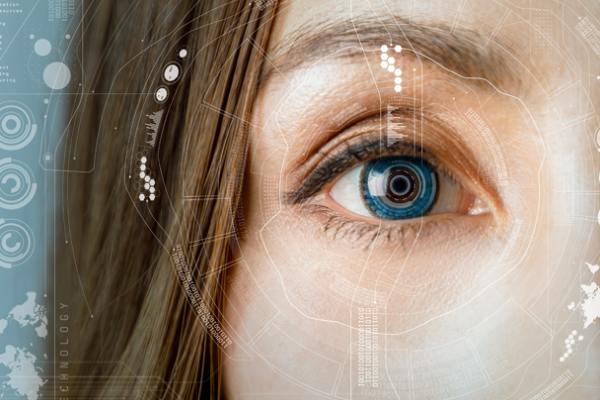Published on the 29/10/2020 | Written by Jonathan Cotton

Connected data will increasingly influence our lives and our decision making…
From IoT-enabled healthcare (think wearables, telemedicine) to facial recognition and mass body temperature surveillance our lives are growing more defined by a cookie trail of internet-connected data.
And as connected devices of every size and shape continue to penetrate everyday life, the behavioural data captured from these sources – an ‘Internet of Behaviour’ as it is being phrased – is offering unprecedented insights into human behavioural predictions.
“[IoB’s] social reception might depend on how heavy-handed organisations are with what they’re trying to do.”
Coined back in 2012 by University of Helsinki Psychology Professor Gote Nyman, the ‘Internet of Behaviour’ or IoB, builds on IoT’s capabilities to produce detailed use and behavioural data that can be collected – and crunched – to produce a detailed picture of the customer.
Now, IoB has been named among Gartner’s strategic technology trends for 2021, where the research and advisory firm says that by 2023, 40 percent of people worldwide will likely be having their individual activities tracked digitally by this Internet of Behaviour.
“The Internet of Behaviour captures the ‘digital dust’ of people’s lives from a variety of sources, and that information can be used by public or private entities to influence behaviour,” says Gartner.
“The data can come from a range of sources, from commercial customer data to social media to facial recognition, and as more and more data becomes available, the IoB will capture increasing amounts of information.”
Adding to impetus is that Covid has brought about a wider acceptance of such surveillance logic. Think about a boarding gate that automatically closes to anyone with a high temperature or who is not wearing a mask. Covid creates a scenario where a perceived public good trumps private interests, accelerating the social license afforded this type of technology.
Data sources can also include data processed by public-sector agencies (consider an individual who has recently tested positive for Covid, for example) along with device location tracking.
“The technology that puts all the data together and draws insight is growing increasingly sophisticated.”
As this data is drawn together from various different sources – say, mobile phone data, plus voice assistant data, and in-car devices – and as that data is shared between different parties, an accurate picture of a user’s likes and dislikes, purchasing habits and general interest can be extrapolated.
And as the amount of data increases, so do the potential applications. Along with distributed cloud, hyper-automation, AI engineering and ‘anywhere operations’, IoB is one of nine key technology trends that will guide organisations over the next five years, says Gartner.
In the age of pandemic, the monitoring of health and safety standards is a hot topic. IoB tech is uniquely suited to such applications. Indeed, sensor tech has already been used in industrial sites to determine if employees were washing their hands regularly. Similarly, sensor technology can also determine if employees are complying with mask protocols.
Such capabilities create exciting new opportunities across industries. One application: Vehicle telematics for the tracking of driver behaviour, with erratic or dangerous driving behaviour monitored to improve safety. Another possible application is preventing those vulnerable to online shopping addiction – a growing segment of the population, as technology that promotes such addictive behaviour improves – by protecting against problematic behaviours (similarly, online gambling).
But not every implementation is benign, and the ability to track behaviour with ever greater accuracy raises a range of issues. For example, while drivers may not object to having speed, braking and cornering tracked in exchange for lower insurance premiums, they might not be as receptive to law enforcement also being able to track that information.
“At the end of the day, the IoB must offer a mutual benefit to both parties or risk being rejected by consumers,” insists Gartner.
“Much of the scope and execution of an IoB will depend on local privacy laws, which may affect how data can be used and in what way.”
Simply put, IoB presents significant and pervasive social and ethical implications.
“Collecting data to influence behaviours has the potential to be a powerful tool, and its social reception might depend on just how heavy-handed organisations are with what they’re trying to do,” says Gartner.
And smart devices need security to match. As low-value connections continue to be made at high speed, security researchers are worried that we may be setting ourselves up for a hyper-connected – but poorly-defended – world.
To illustrate this point, last year Kaspersky set up 50 IoT ‘honeypots’ – networks of virtual copies of various internet-connected devices and applications.
The result? More than 100 million attacks on the IoT devices were detected from more than a quarter of a million unique IP addresses.
The securing of such connections is still a work in progress.
“IoT security is really a collective responsibility between consumers who seek all types of connections and companies that want to use connectivity to create richer customer experiences,” says Kaspersky.
The release of Gartner’s Strategic Technology Trends for 2021 coincides with its APAC IT Symposium/Xpo event, on (virtually) this week.



























